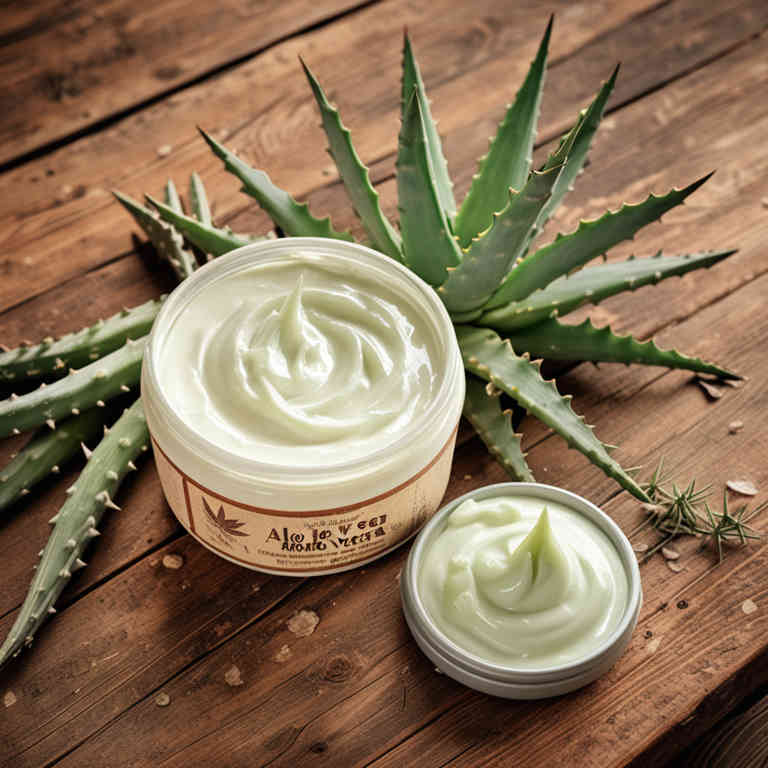Aloe vera cream for medicinal use

Aloe vera cream is a topical preparation made from the gel-like substance extracted from the leaves of the Aloe barbadensis plant.
It is widely used in herbalism for its soothing and healing properties, particularly for skin conditions such as burns, eczema, and psoriasis. The cream contains anti-inflammatory and antimicrobial compounds that help reduce redness, irritation, and infection. It is often applied directly to the skin to promote wound healing and moisturize dry areas.
In traditional herbal practices, it is also used to support digestive health when consumed in small amounts.
Uses
Aloe vera cream has been used to treat various skin conditions for centuries, with its roots in ancient Egyptian, Indian, and Chinese medicinal practices.
Historically, it was revered for its soothing properties and was used to heal wounds, reduce inflammation, and promote skin health. In traditional medicine, it was applied topically to burns, rashes, and other skin irritations due to its anti-inflammatory and antimicrobial effects. Modern uses of aloe vera cream include its role in skincare products for moisturizing, reducing acne, and aiding in the healing of sunburns.
Today, it is widely recognized as a natural remedy with scientific support for its ability to enhance skin recovery and hydration.
Benefits
Aloe vera cream has health benefits such as soothing skin irritations, promoting wound healing, and reducing inflammation.
It is commonly used to treat burns, eczema, and psoriasis due to its anti-inflammatory and antimicrobial properties. The cream contains vitamins, enzymes, and antioxidants that help nourish and moisturize the skin. It can also help alleviate symptoms of acne and improve skin texture.
Overall, aloe vera cream is a natural remedy that supports skin health and provides relief for various dermatological conditions.
Constituents
Aloe vera cream active constituents include polysaccharides, enzymes, vitamins, minerals, and antioxidants.
These components contribute to its anti-inflammatory, moisturizing, and soothing properties. Polysaccharides help in skin repair and hydration, while enzymes like bradykinase reduce inflammation. Vitamins such as A, C, and E support skin health and protection against oxidative stress.
Minerals like zinc and manganese further enhance its healing and nourishing effects.
Preparation
To make Aloe vera cream, start by selecting a fresh Aloe vera leaf and washing it thoroughly.
Using a sharp knife, carefully slice the leaf lengthwise to expose the gel inside. Scoop out the gel and blend it with a small amount of water until it becomes a smooth liquid. Next, mix the Aloe vera gel with a carrier oil, such as coconut or jojoba oil, in a ratio of 1:1 to create a creamy consistency.
Finally, store the mixture in a clean, airtight container in the refrigerator for up to two weeks.
Side Effects
Aloe vera cream may lead to skin irritation, redness, or allergic reactions in some individuals.
It is generally considered safe for topical use, but prolonged application can cause gastrointestinal discomfort if ingested. Some people may experience a burning sensation or dryness at the application site. In rare cases, it may interact with certain medications or exacerbate existing skin conditions.
It is important to perform a patch test before using aloe vera cream to check for adverse reactions.